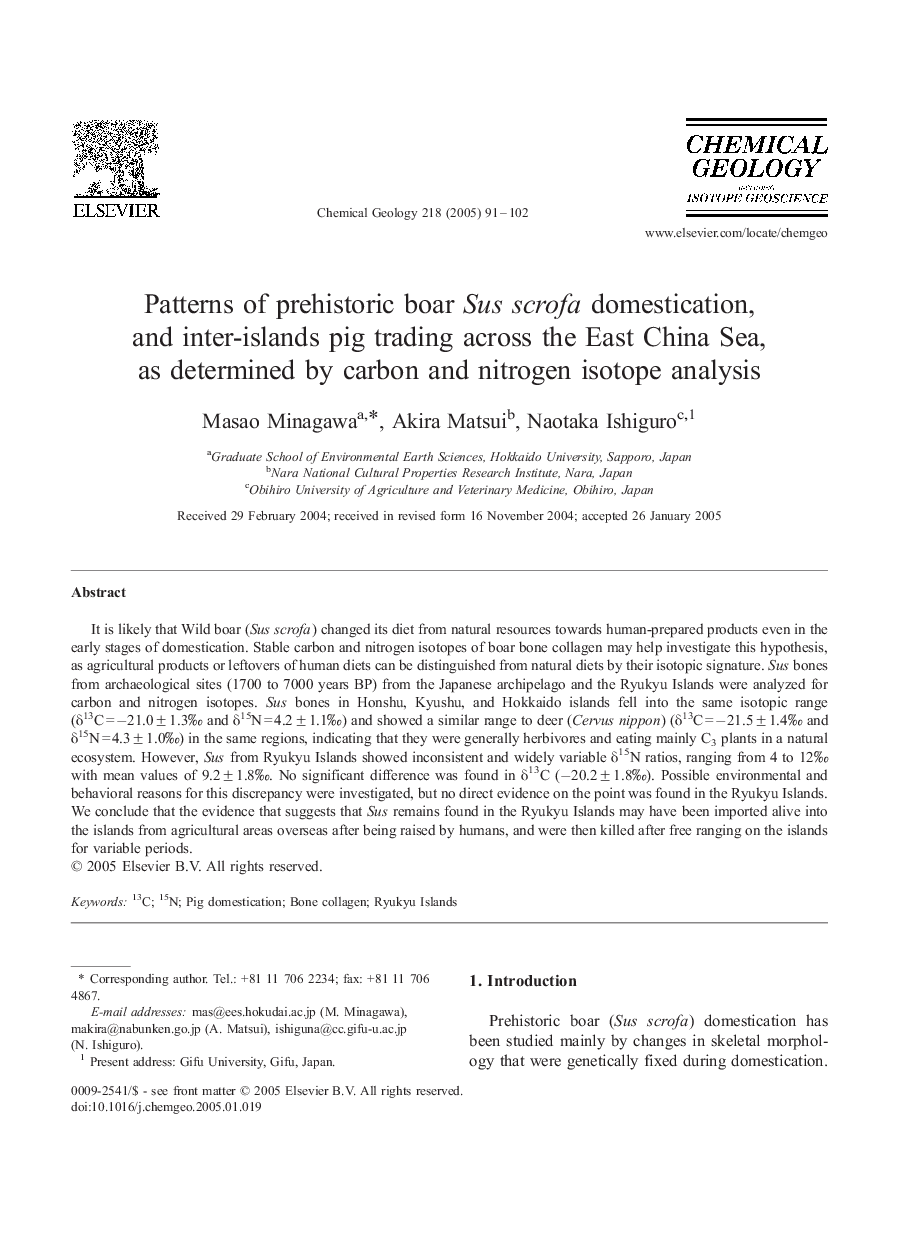| Article ID | Journal | Published Year | Pages | File Type |
|---|---|---|---|---|
| 9529044 | Chemical Geology | 2005 | 12 Pages |
Abstract
It is likely that Wild boar (Sus scrofa) changed its diet from natural resources towards human-prepared products even in the early stages of domestication. Stable carbon and nitrogen isotopes of boar bone collagen may help investigate this hypothesis, as agricultural products or leftovers of human diets can be distinguished from natural diets by their isotopic signature. Sus bones from archaeological sites (1700 to 7000 years BP) from the Japanese archipelago and the Ryukyu Islands were analyzed for carbon and nitrogen isotopes. Sus bones in Honshu, Kyushu, and Hokkaido islands fell into the same isotopic range (δ13C = â21.0 ± 1.3â° and δ15N = 4.2 ± 1.1â°) and showed a similar range to deer (Cervus nippon) (δ13C = â21.5 ± 1.4â° and δ15N = 4.3 ± 1.0â°) in the same regions, indicating that they were generally herbivores and eating mainly C3 plants in a natural ecosystem. However, Sus from Ryukyu Islands showed inconsistent and widely variable δ15N ratios, ranging from 4 to 12â° with mean values of 9.2 ± 1.8â°. No significant difference was found in δ13C (â20.2 ± 1.8â°). Possible environmental and behavioral reasons for this discrepancy were investigated, but no direct evidence on the point was found in the Ryukyu Islands. We conclude that the evidence that suggests that Sus remains found in the Ryukyu Islands may have been imported alive into the islands from agricultural areas overseas after being raised by humans, and were then killed after free ranging on the islands for variable periods.
Keywords
Related Topics
Physical Sciences and Engineering
Earth and Planetary Sciences
Geochemistry and Petrology
Authors
Masao Minagawa, Akira Matsui, Naotaka Ishiguro,
